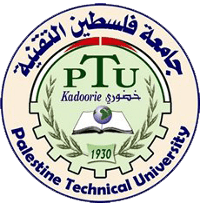Please use this identifier to cite or link to this item:
https://scholar.ptuk.edu.ps/handle/123456789/950 cc-by
| Title: | Evaluating the limit of early detection and diagnosis of human pathogenic bacteria using electronic tongue and multivariate data analysis |
| Other Titles: | تقييم الحد الأدنى للفحص المبكر للبكتيريا الغذائية الممرضة للإنسان باستخدام اللسان الالكتروني والتحليل المتعدد العوامل |
| Authors: | Abu Rumaila, Aya |
| Keywords: | Electronic tongue;Foodborne pathogens;Multivariate data analysis;Principal component analysis;Partial least squares model |
| Issue Date: | 3-Feb-2022 |
| Publisher: | Palestine Technical University - Kadoorie |
| Citation: | Abu Rumaila,A.(2022).Evaluating the limit of early detection and diagnosis of human pathogenic bacteria using electronic tongue and multivariate data analysis |
| Abstract: | Background: Electronic tongue (ET) has been an essential tool in the medical field as an alternative to the traditional diagnostic method. It is based on a multi-sensor array set with characteristics of high cross sensitivity and low selectivity. This research is carried out to investigate the possibility of using Astree II Alpha MOS ET as a fast and alternative assessment tool for early diagnosis and detection of human pathogenic bacteria by determining the limit for early detection (for colony forming unit (CFU) concentrations and incubation periods) and diagnosis of foodborne human pathogenic bacteria. Moreover, to use ET to identify unknown bacterial samples relaying on pre-stored bacterial models. XII Methodology: Two bacterial strains, a gram positive and gram negative:- Staphylococcus aureus (ATCC 25923) and Escherichia coli (ATCC25922), respectively, were used for this research. In which ET was verified for its ability to sense their presence in nutrient broth (NB) at the limit of detection (LOD) level for the inoculum concentrations and incubation periods using partial least square (PLS) regression. The bacteria were proliferated with original inoculum (approximately 107*105 CFU/mL) that were diluted up to 10-14 and the dilutions ranged from 10-14 to 10-4 were measured using ET. Then the lowest detected concentration was identified and monitored to be used for growing the bacteria with different incubation periods (from 4 to 24 h). After that, all the measured data for both concentrations and incubation periods of each bacterial type were collected and performed in the principal component analysis (PCA) scores plot model. This was followed by projecting unknown samples of bacteria that were with specific concentration and time of incubation; to check ET's ability to recognize and categorize these unknowns. Results: The results have approved the ability of Astree II ET in tracking bacterial growth and following the metabolic changes in the media. It was able to sensitively identify microorganisms’ proliferation even with very low concentration (between the dilutions 10-11 and 10-10 for both bacteria E.coli and S.aureus). Likewise, it was able to detect S.aureus at a 6 h XIII incubation period and between 6 and 8 h for E.coli, which is the LOD that ET can detect these two types of bacteria. After creating the strains models, ET was able to classify each unknown sample according to their foot printing characteristics in the media; and to determine which one was S.aureus, E.coli, and neither of them. Conclusions: This research and results can be used for the subsequent step in considering ET as a powerful potentiometric tool for early and fast identification and classification of harmful foodborne microorganisms in their native state within a complex system, to save patients’ lives. Moreover, open a wide range of applications that ET will be door as an alternative useful monitoring technique |
| URI: | https://scholar.ptuk.edu.ps/handle/123456789/950 |
| Appears in Collections: | Master Thesis/ Agricultural Biotechnology |
Files in This Item:
| File | Description | Size | Format | |
|---|---|---|---|---|
| Aya thesis_final_26022022.pdf | 2.04 MB | Adobe PDF |  View/Open |
Items in DSpace are protected by copyright, with all rights reserved, unless otherwise indicated.
